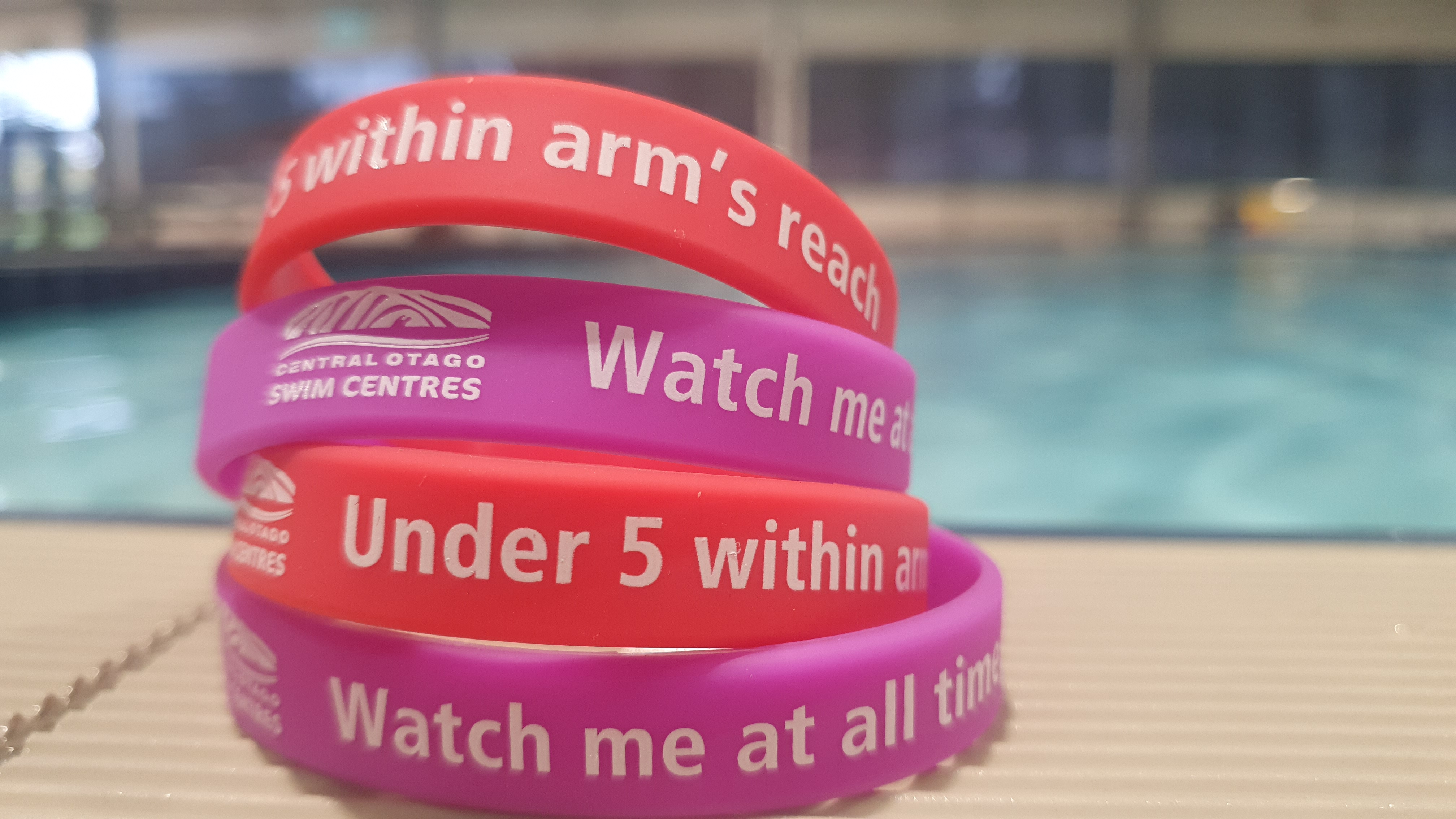Making Central Otago pools safer
Between March 2018 and February 2023, 96% of rescues at Central Otago District Council pools involved children.
In the past five years, 52 rescues have been carried out, where lifeguards have had to intervene and thus prevented a major emergency.
Fifty of these rescues were children. At least 14 of them were children under five, and 10 were under the age of 10.
They were all near misses, but still, these were scary numbers, CODC Aquatics Manager Carly Getson said.
“To prevent children from drowning, they need active supervision around water. Two of the biggest risk factors for drowning are lack of swimming ability and lack of close supervision - two risks that regularly occur at our Council-operated pools around the district.”
To ensure people are using the pools safely, the Council is bringing in new pool supervision rules for children under the age of 10 years.
From 1 July 2023, the Council will be introducing orange and purple wristbands so that lifeguards can immediately identify children in the target age groups.
The orange wristband is for under 5s, to remind parents and caregivers to always remain within arm’s reach. This includes the toddler pools.
The purple wristband is for children aged 5 to 9 years, to remind parents and caregivers to watch their children at all times.
Under the new rules, children under the age of 5 must be supervised by an adult/caregiver over the age of 16. The supervisor must have no more than two children under 5 in their care and the child or children must be within arm’s reach at all times. Children under the age of 10 must be actively supervised by an adult/caregiver over the age of 16 at all times. Previously, the age limit for supervision was 8 years old. This has been raised to 10 years of age because by then children have developed more advanced swimming ability and can get themselves out of difficulty more easily.
Lifeguards alone cannot supervise every child, Ms Getson said.
“Lifeguards are not babysitters. All too often parents and caregivers are not watching their young children. They are on their phones or talking, or otherwise distracted. They are not swimming with their children. As a result, lifeguards spend a lot of time talking to parents and caregivers, reinforcing Council’s supervision rules, and highlighting the risks associated with failing to provide active supervision. Things can escalate pretty quickly when a young child gets into trouble in the water.
“The wristbands immediately identify which children are most at risk, and hopefully they’ll serve as a reminder that parents and caregivers need to watch their children, and not put them at risk by getting distracted.
“The changes will ensure our pools are following best industry standards and will help our lifeguards easily identify high risk children,” Ms Getson said.
Recent industry workshops on the issue of child supervision indicate that many councils are already making changes to their supervision requirements. Dunedin City Council has raised its age limit to 10 and introduced wristbands.
The Christchurch City Council has also introduced stricter rules around children in the 8 to 12 age group.
“By making changes, Council can put another layer of protection and prevention in our pools for our children,” Ms Getson said.
CODC Group Manager – Community Experience David Scoones applauded the move.
“The safety of our tamariki in our community is of the upmost importance, so the Council is strongly in favour of these changes that our Aquatics Team are making.
“We want all children to enjoy their time at our pools, however safety comes first.”
The new supervision rules and wristbands will be trialled initially at the Cromwell and Alexandra pools for three months, and if successful, rolled out on a mandatory basis to all pools.
The bands will be a mix of reusable and single use. Children who come to the pool regularly such as swim school and members will receive the reusable silicone wristbands.
For the trial period, everyone else will be provided with the single use, with a view to moving all to the reusable bands.
Clarification: Originally, we quoted that 97% of the rescues were children under the age of 8. While the figures involving children are still high at 28% of rescues being children under 5, and 19% children under 10, and about 50% children under the age of 13, the error is regretted.


